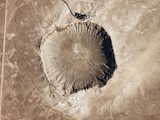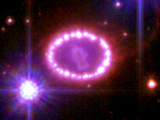Asteroid Terrestrial-impact Last Alert System
ATLAS is an asteroid impact early warning system developed by the University of Hawaii and funded by NASA. It consists of four telescopes (Hawaii ×2, Chile, South Africa), which automatically scan the whole sky several times every night looking for moving objects.
ATLAS will provide a warning time depending on the size of the asteroid -- larger asteroids can be detected further from Earth. ATLAS will see a small (~20 meter) asteroid several days out, and a 100 meter asteroid several weeks out. A 100 meter asteroid has approximately 10 times the destructive force of the 2021 Tonga volcanic eruption.
| ATLAS Discovery Totals | |
| Near-Earth Asteroids |
1327
|
| Potentially Hazardous Asteroids |
113
|
| Comets |
111
|
| Supernovae |
5,033
|
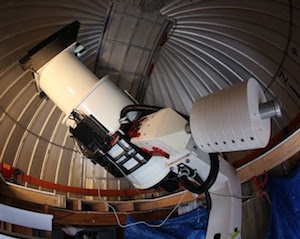
ATLAS 2 on Maunaloa
For media inquiries regarding comet 3I/ATLAS or asteroid 2024 YR4, please contact ATLAS Co-PI Larry Denneau at denneau@hawaii.edu |
- (2025-11-05) ATLAS data products are available at NASA PDS.
- (2025-07-02) ATLAS discovers the third interstellar object, comet C/2025 N1 (3I).
- (2025-02-24) Asteroid 2024 YR4 no longer poses an impact threat in 2032.
- (2024-01-29) ATLAS discovery 2024 YR4 currently has a 1% chance of Earth impact in 2032. See the IWAN page summarzing what we currently know.
- (2024-09-29) Comet Tsuchinshan-ATLAS is here!
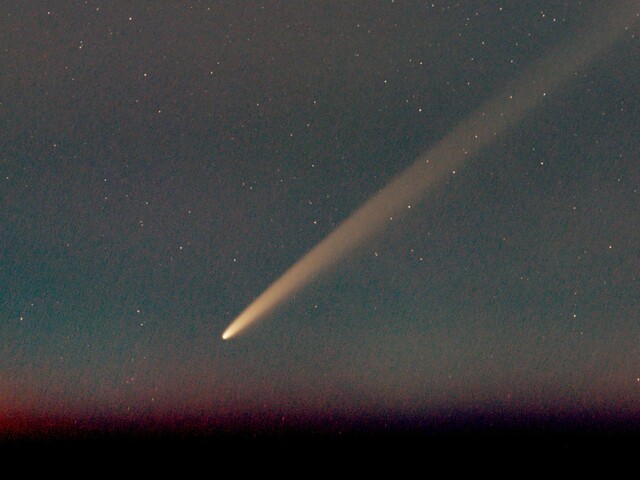
Image credit: C. Messier 28 September 2024
Comet C/2023 A3 (Tsuchinshan-ATLAS) was first detected (but not confirmed) in early 2023 by Purple Mountain Observatory then re-discovered by ATLAS-Sutherland about a month later. Now at perihelion, it is naked-eye visible in the early morning and will brighten and become an evening comet in October 2024. - (2024-09-27) The so-called "mini-moon" 2024 PT5 discovered by ATLAS-Sutherland is in the news all over the place!
- (2022-10-07) The ATLAS Solar System Catalog (SSCAT) Version 1 has been released at DPS54. This catalog consists of over 125 million observations of 580,000 asteroids and comets. Check out the README.
- (2022-09-26) ATLAS images the DART impact on moonlet Dimorphos at the Didymos system! This sequence consists of 185 images taken every 40 seconds, about two hours elapsed time.
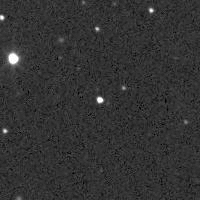
- (2021-01-05) Access our new forced photometry server. We have constructed the ATLAS forced photometry server which provides public
access to photometric measurements over the full history of ATLAS survey.
Users should note that this is an experimental service, and carefully read the
documentation on the data products on the web pages. While we provide a web
form and API, large volume requests are not encouraged without contacting us directly.
- Read the Tonry et al. (2018) ATLAS system definition paper.
- Watch ATLAS make observations in real time
South Africa | Chile | Maunaloa (Hawaii) | Haleakala (Hawaii)
ATLAS promptly submits observations of new Near Earth Asteroids to the Minor Planet Center, where they appear on the NEO confirmation page. Astronomers all across the world check this webpage every night and collect further measurements needed to calculate the asteroids' orbits and determine if they could threaten Earth.
Meanwhile, the Scout Hazard Assessment webpage maintained by NASA-JPL's Center for Near Earth Object Studies interprets the observations using sophisticated computer programs, checking for immediate threats and requesting further measurements of asteroids whose orbits remain uncertain. Both websites are publicly accessible to anyone in the world.
ATLAS also processes the survey data to search for stationary transients, which are reported to the IAU Transient Name Server. These include supernovae, CVs, stellar outbursts, and fast transients such as GRB afterglows. We also have an agreement with LIGO to search for electromagnetic counterparts to gravitational wave sources. Our colleagues in Queen’s University Belfast, Harvard, and the Space Telescope Science Institute help run these programmes. We are in the top 3 reporting groups worldwide, with more than 300 supernovae candidates found during 2016. A full list of ATLAS transient discoveries can be accessed here.



